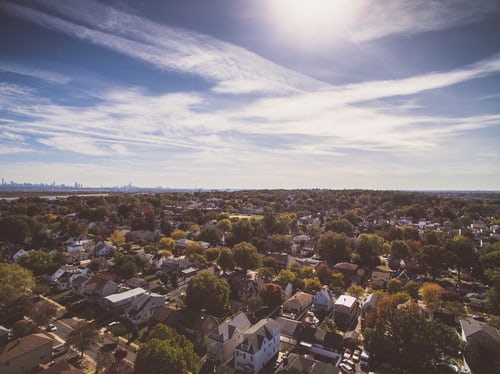How To Choose the Right Neighborhood When Moving
While moving to a new neighborhood and home is exciting, it can be daunting — unless you have help to guide you through the process.
Choosing a neighborhood is just as important as choosing a home. There are many factors to consider, such as safety or proximity to amenities.
If you’re moving and starting to look for a new neighborhood to call home, here are tips to help you choose the right one.
Figure Out What You Want
The first step in successfully choosing a new neighborhood to move to is figuring out what you want. There are many things to consider, especially if you’re planning on staying there for a long time.
Here are some questions to consider before you move into a new neighborhood:
- Do you want a quiet suburb or a lively city scene?
- Are you interested in an up-and-coming neighborhood or an established one?
- Do you want an apartment or a house?
- Is safety a top concern for your family?
- How much can you afford on a house or apartment rent?
- What are deal-breakers, and what criteria are you flexible on?
- Do you want to be close to parks and outdoor activities?
Every person has different requirements, wants, and needs, so figuring out what you want in a neighborhood and home is important to avoid shopping around and wasting time.
Also, keep in mind that if you don’t know exactly what you’re looking for, that’s okay too. The more neighborhoods you explore, the more you will figure out what you like and dislike.
Consider Crime Rates
Whether you have a family or not, safety is usually a high priority for most people when moving to a new neighborhood.
If you have children, a dog that needs to be walked late at night, or a single person living on your own, knowing and feeling like you’re safe in your neighborhood is crucial. You’ll want to feel comfortable and enjoy your new home.
To figure out the neighborhood’s crime rates, call the local police to ask about it or use a website like AreaVibes, CrimeReports, or Family Watchdog. These sites will tell you the time of the crime (if any) in a designated area and how long ago the crimes occurred.
Drive Around Potential Neighborhoods
Driving around potential neighborhoods to move to will help you get a sense of the safety and liveliness — or lack thereof.
It’s always best to look at neighborhoods online and in-person; what looks excellent online might not be so great in person. The internet (usually) won’t tell you how noisy or loud the neighbors are, for example.
When checking out a new neighborhood, make sure to drive through at different times of the day. A neighborhood that seems like a quaint, quiet area in the morning might be party central for young adults at night.
Other things to take a look at are graffiti, broken windows, if residents walk around by themselves at night, if the roads and sidewalks well kept, and whether the homes look abandoned or flourishing.
Factor in Commuting Time
Before moving to a new neighborhood, factor in your commuting time. Commuting time includes not only work but also grocery stores, gyms, schools, and getting to amenities.
Would you want to live in a more rural area that’s serene and away from the city but takes a venture to get groceries, or do you want to be in the heart of downtown where you can walk to get to the gym?
According to professional movers, you should figure out if a neighborhood will fit into your lifestyle. Will it take an hour to drop your child off at school, or will running errands always be an inconvenience?
Consider what aspects will be part of your everyday life and see if the neighborhood you’re interested in will work for your lifestyle.
Also, think about public transportation opportunities if that’s something you’re interested in. Do you own a car or prefer to travel by train to work or run errands?
Find Your Perfect Neighborhood
Whether you’re making a permanent investment in a home or want a new change of pace in a new apartment, the neighborhood you move to matters just as much as the home.
Remember to note what you want in a neighborhood, check out the safety ratings, drive by it at different times of the day, and figure out your commuting time.
With these tips, you’ll be sure to find the perfect neighborhood for you, your lifestyle, and your future.

